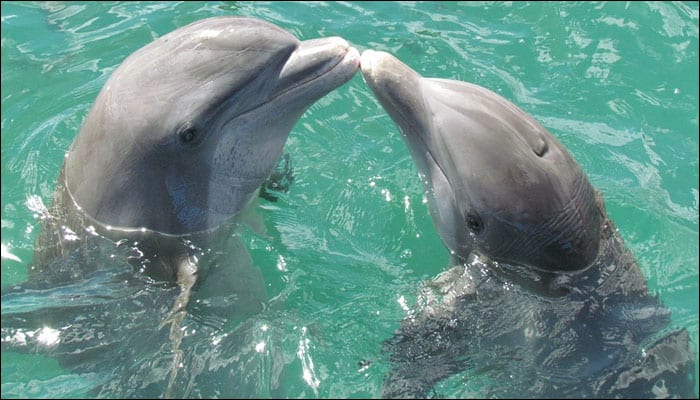Washington: Scientists are moving towards unravelling why otherwise healthy dolphins, whales and porpoises get stranded along coasts worldwide.
Thanks to a collaboration between NASA scientists and marine biologists, the new research suggests that space weather may be part of a “cocktail of contributing factors” influencing animal beaching.
“Our view is that strandings are likely caused by a complex combination of multiple environmental factors,” said Antti Pulkkinen of NASA’s Goddard Space Flight Centre in Greenbelt, Maryland.
Mass strandings occur around the world and can affect anywhere from three to several hundred animals during any given event.
Although they are a global phenomenon, scientists have identified certain hot spots: New Zealand, Australia and Cape Cod, Massachusetts, all of which share key geographic characteristics like sloping beaches and fine-grained sediment – factors thought to play a role in strandings.
In strandings involving multiple deaths, autopsies reveal that the vast majority of the deceased animals were healthy before they beached.
Some researchers hypothesise groups strand when their strong social bonds compel them to follow a distressed individual into shallow waters.
“Whales and dolphins have always been mythical emblems for us,” said Desray Reeb, a marine biologist at Bureau of Ocean Energy Management (BOEM) headquarters in Sterling, Virginia.
“They’re intelligent, social and mystical, and present an intriguing challenge for us to understand because they’re so like us, and yet so different.”
BOEM is part of the collaboration.
The team initially focused on Cape Cod – the biggest hot spot in the US – and sifted through nearly two decades of stranding observations by the International Fund for Animal Welfare, or IFAW, alongside both ground- and space-based NASA space weather data.
Just as weather varies on Earth, occasionally bringing thunderstorms and gusty winds, the ever-changing Sun sometimes hurls massive clouds of solar material and magnetic fields into space, called coronal mass ejections, or CMEs.
The effects of these eruptions on near-Earth space are collectively known as space weather.
Coronal mass ejections can spark powerful geomagnetic storms if they slam into Earth’s magnetic field.
The researchers pooled massive data sets to see if disturbances to the magnetic field around Earth could be what confuses these sea creatures, known as cetaceans.
Cetaceans are thought to use Earth’s magnetic field to navigate. Since intense solar storms can disturb the magnetic field, the scientists wanted to determine whether they could, by extension, actually interfere with animals’ internal compasses and lead them astray.
The results of their analysis led them to consider that while space weather is not a primary driver of strandings, it could be one factor among several.
“We’ve learned so far there is no smoking gun indicating space weather is the primary driver,” Pulkkinen said in a statement released by NASA. “But there is a sense that geomagnetic conditions may be part of a cocktail of contributing factors.”
The scientists are now seeking others to join their search for the factors that send ocean mammals off course, in the hopes of perhaps one day predicting strandings before they happen.
IANS

